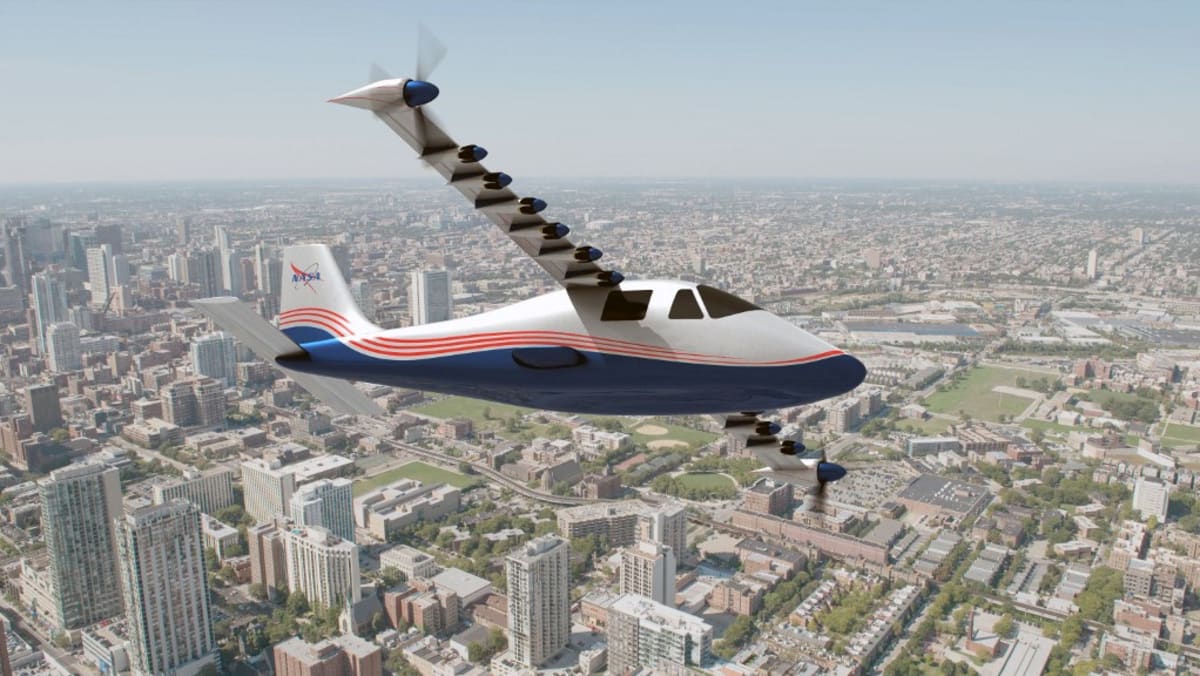Commentary: NASA’s electric plane X-57 prepares to fly – here’s how it advances emissions-free aviation
Air density changes with altitude and affects the thrust you get from a propeller. Now that we can make propellers that work effectively at all altitudes and speeds, we can really get the most out of the energy stored in the batteries. New designs, such as the first ever 11-bladed propeller (on the Piper Cheyenne plane), can achieve very high thrust even at high air density.
Some aircraft even use “vectored thrust” by allowing the motors and propellers to rotate, which gives the option of vertical takeoff and landing. These aircraft might more resemble helicopters than planes, and might mean conventional airports with long runways and large terminals will be a thing of the past.
BATTERY TECHNOLOGY
The X-57 uses off-the-shelf lithium-ion batteries. This is because the project is primarily addressing the potential for new propeller and wing configurations rather than developing the perfect battery.
But that will be an important challenge for electric aircraft developers to overcome. Lithium batteries are pretty much the best we’ve got so far, but they are still heavy. Lithium metal is also hazardous as it catches fire easily.
There are advantages with using batteries. Their weight stays constant throughout the flight, meaning they don’t need to be stored in the wings as aviation fuel traditionally has been. With liquid fuel, the weight of the plane reduces significantly as fuel is consumed and keeping the fuel in the wings ensures that the balance of the aircraft isn’t changed.
However, it is really energy density – the amount of energy a battery contains compared to its weight or size – that matters. New advances are being made constantly, such as batteries created based on quantum technology. But while these charge faster than normal batteries they won’t replace lithium batteries and are unlikely to transform the prospects for electrically powered flight.
For all the latest world News Click Here

